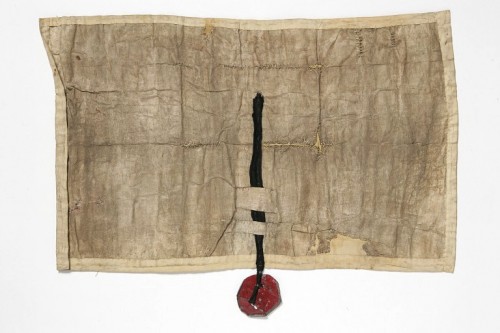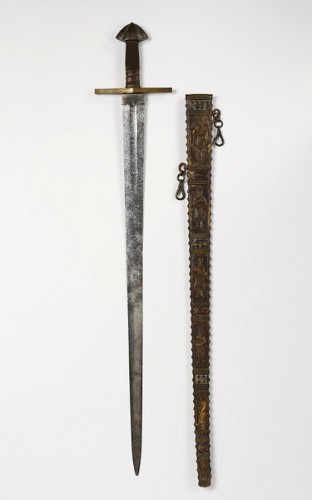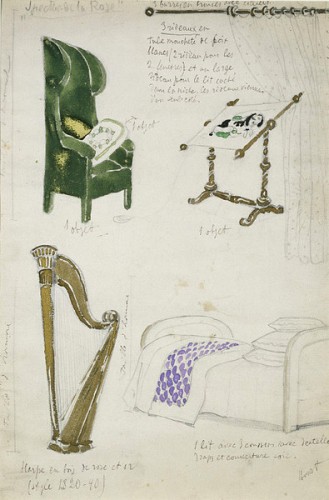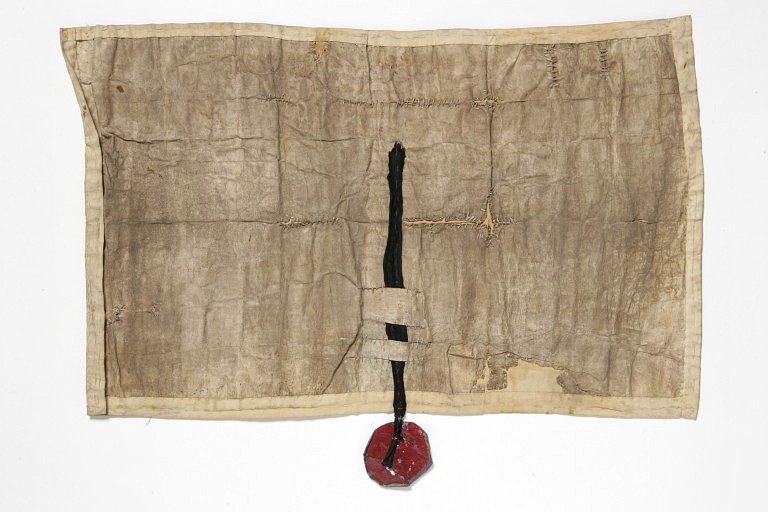While it is interesting to read about how props have been constructed and used throughout the long history of theatre, it is rare to find surviving examples of actual props from bygone days. After a production, props are either integrated into a theatre’s prop storage, taken home by the cast and crew, or simply disposed of. I would hazard a guess that most historical props are kept in private collections or buried deep in the back of stock rooms at old theatres, with no way of knowing just what is out there. Luckily, some of these items do make their way to museums who recognize their historical value. The Victoria and Albert Museum in London has a few such items in their collection related to props.

The first is this bond from Shakespeare’s Merchant of Venice. For those unfamiliar with the story, Shylock lends Antonio (the aforementioned merchant) 3000 ducats; if Antonio cannot repay, he must give Shylock a pound of his flesh. This bond secures the deal and is a critical prop during the courtroom scene where Antonio’s fate must be decided.
This bond was used by Henry Irving during the production of The Merchant of Venice which opened at the Lyceum Theatre in 1879 (the museum states it opened in January, but all accounts list its opening as November). The production was designed by Hawes Craven. It is made of beige vellum mounted on cream cotton cloth with black petersham ribbon and burgundy-painted metal seal. The dust and age is a deliberate treatment done by the prop maker. Interestingly, this prop has some areas torn on purpose and stitched together with double cotton thread; it seems likely this was done so the same prop could be torn up each performance and reattached before the next one.
Irving’s production of Merchant was one of the most influential at that time, as well as one of the most popular and long-running. You can find scores of books and articles delving into every aspect of this production and his performance.
This prop came to the British Theatre Museum (a branch of the V&A which closed in 2007 and whose collection was absorbed into the main museum) in 1968 by Lady Wolfit. It had probably belonged to her husband, Sir Donald Wolfit, a well-known English theatre actor-manager, who had died just a few months prior to the Lady’s donation.

Next is this property sword, also used by Henry Irving for an 1895 adaptation of King Arthur. The sets, costumes and props for this show were designed by Arthurian artist Edward Burne-Jones. This prop is based off of a sword used during the Holy Roman Empire for coronation ceremonies, known as the “Sword of Saint Maurice”.

The prop itself has a pommel made of carved brazil nut wood with an embossed and painted metal scabbard. It was built between 1894 and 1895.

The final image is a drawing showing the stage property designs done by Léon Bakst for a production of the ballet La Spectre de la rose at the Diaghilev Ballets Russes in Monte Carlo in 1911. The pencil, watercolor, gouache and gold paint drawings show a green wing cushioned chair, a sewing frame behind a curtain on a curtain rod, a harp, and a bed with blanket and pillows. You can find more of his set designs on his official site, as well as his costume designs. This is the only example of his prop designs that I have ever come across.






How very cool. In general, I’ve enjoyed the historical props articles you’ve found but there’s something really delightful about seeing actual props that old.
Yeah, that’s one of the great shames of the older books and articles about props. They rarely have illustrations, let alone photographs, showing what the props actually looked like.
I’ve often entertained the idea of making a documentary in which I try to locate the world’s oldest surviving prop.